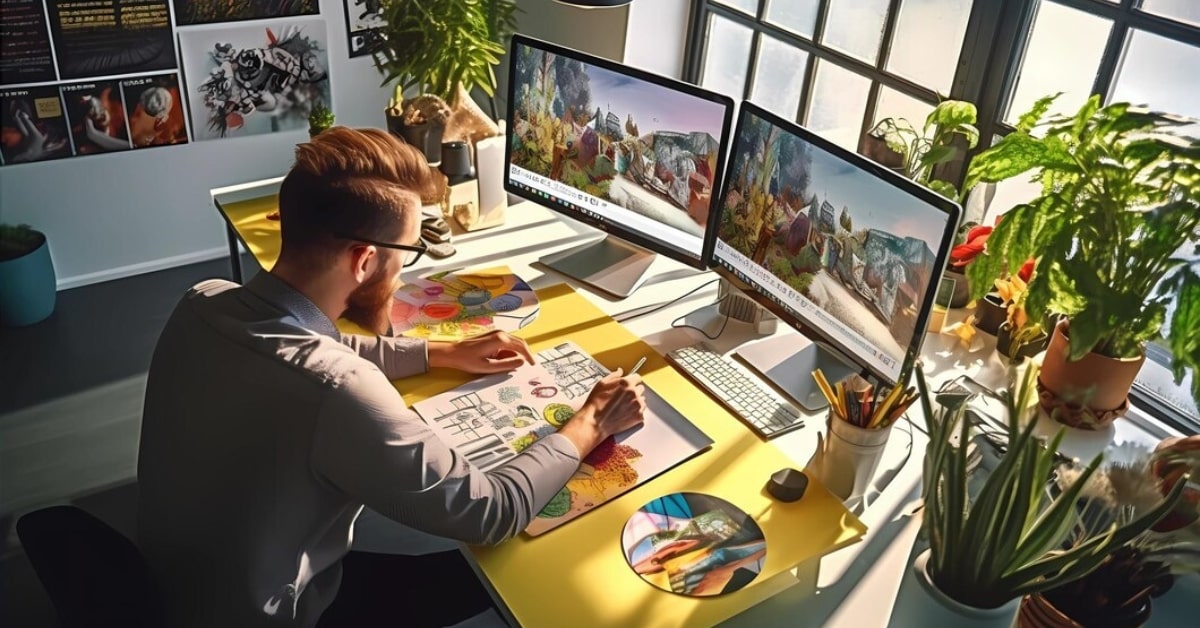Graphic design experience encapsulates the journey, skills, and expertise acquired by individuals in the dynamic realm of image editing and visual communication. It encompasses a fusion of creativity, technical proficiency, and practical knowledge gained through years of practice. Let’s delve into the essence of graphic design experience, its significance, and the multifaceted aspects it entails.
Understanding Graphic Design Experience
- Skill Development: Experience in graphic design involves honing skills in various aspects such as layout, typography, color theory, and software proficiency.
- Problem-Solving: It nurtures the ability to solve design challenges creatively, meeting client objectives while maintaining aesthetic appeal.
- Adaptability: Experience fosters adaptability to evolving design trends, technologies, and client preferences.
Components of Graphic Design Experience
- Years of Practice: Experience accumulates over years of actively engaging in design projects, from beginner-level to advanced.
- Portfolio Development: Building a comprehensive portfolio showcasing diverse projects and demonstrating growth and expertise.
- Client Interaction: Engaging with clients, understanding their needs, and translating them into visually appealing designs.
Significance of Graphic Design Experience
- Refined Skill Set: Experience refines design skills, enhancing the ability to create impactful and visually appealing designs.
- Efficiency and Accuracy: Seasoned designers often work more efficiently, making informed design decisions swiftly and accurately.
- Creative Confidence: Experience breeds confidence, allowing designers to take creative risks and innovate effectively.
Growth and Evolution
- Continuous Learning: Experienced designers continue to learn, staying updated with trends, technologies, and design methodologies.
- Mentorship and Leadership: With experience comes the potential for mentorship, guiding junior designers, and assuming leadership roles.
- Experimentation: Experienced designers are more open to experimentation, pushing boundaries, and exploring unconventional approaches.
Cultivating Graphic Design Experience
- Diverse Projects: Working on diverse projects across various industries and design domains enriches experience.
- Seeking Feedback: Actively seeking and incorporating feedback to improve and evolve as a designer.
- Networking: Building connections within the design community, collaborating with peers, and learning from others’ experiences.
FAQs
Is graphic design experience solely about the number of years worked?
No, the experience encompasses a blend of years worked, the diversity of projects undertaken, and the skills and expertise gained during that time.
How does graphic design experience impact career opportunities?
Extensive experience can open doors to senior positions, leadership roles, and opportunities for mentorship and consultancy.
Can one gain graphic design experience without formal education?
Yes, practical experience, self-learning, and a strong portfolio can compensate for formal education, but it may take longer to establish credibility.
How does one demonstrate graphic design experience in a portfolio?
A portfolio should showcase a range of projects, demonstrating skills, creativity, problem-solving abilities, and growth over time.
Is graphic design experience essential for freelancing or starting a design business?
While experience enhances credibility, freelancers or new businesses can build a reputation through quality work, client satisfaction, and a strong portfolio.
Conclusion
Graphic design experience is a journey marked by continuous growth, skill refinement, and the evolution of creative vision. It is a testament to a designer’s expertise, shaping their ability to craft visually compelling narratives that resonate with audiences.
This page was last edited on 5 March 2024, at 5:49 pm
